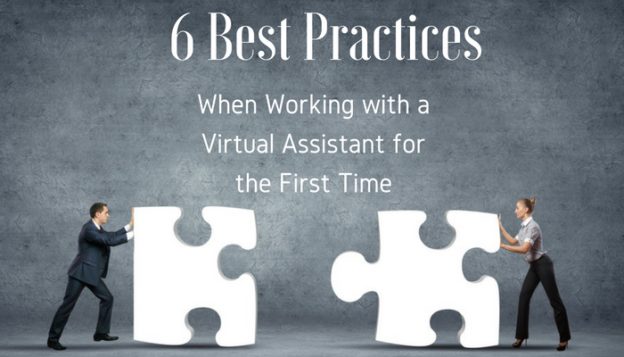In today’s digital age, technology has become an integral part of marketing efforts. As such, it’s becoming increasingly important for businesses to have a Tech & Marketing Manager on their team. This is because a Tech & Marketing Manager possesses a unique set of skills that can help businesses to leverage technology to enhance their marketing efforts and drive growth. In this blog, we’ll explore why a Tech & Marketing Manager is what a company needs and why.
What is a Tech & Marketing Manager?
A Tech & Marketing Manager is a marketing professional with a strong technical background. They possess both marketing and technical skills, which allows them to develop and execute marketing strategies that incorporate digital technologies. They specialize in leveraging technology to enhance marketing efforts and create more effective campaigns. This can include managing website content, developing email marketing campaigns, and utilizing social media platforms. A Tech & Marketing Manager is responsible for driving brand awareness, generating leads, and increasing sales revenue through digital channels.
Why does a company need a Tech & Marketing Manager?
Technical expertise
One of the primary reasons why a company needs a Tech & Marketing Manager is for their technical expertise. A Tech & Marketing Manager possesses a deep understanding of technology and how it can be used to enhance marketing efforts. They are knowledgeable about various digital tools, such as marketing automation platforms, email marketing software, and social media management tools. With this expertise, they can effectively use these tools to streamline marketing processes, optimize campaigns, and generate higher returns on investment.
Improved efficiency
Another reason why a company needs a Tech & Marketing Manager is for improved efficiency. With their technical skills, a Tech & Marketing Manager can automate various marketing processes, such as email marketing campaigns, social media posting, and lead nurturing. This automation allows for greater efficiency and saves time and resources, enabling the marketing team to focus on other critical tasks, such as content creation and campaign analysis.
Targeted audience reach
Ah, the Tech & Marketing Manager – the elusive unicorn of the marketing world. With their unique blend of marketing and tech skills, they are the magical beings that can bring a company’s marketing efforts to the next level. So, why do you need one? Well, let me break it down for you.
A Tech & Marketing Manager can also help a company to reach its target audience more effectively. They are skilled in using digital tools to identify and segment audiences based on demographics, behaviors, and interests. This enables the marketing team to create targeted campaigns that resonate with specific groups of people. By using digital tools to understand the behavior of the target audience, Tech & Marketing Managers can craft campaigns that are more likely to convert prospects into customers.
Greater ROI
In addition to improved efficiency and targeted audience reach, a Tech & Marketing Manager can also help a company to generate a greater return on investment (ROI). They are able to measure and analyze marketing metrics such as website traffic, engagement rates, and conversion rates, to determine the effectiveness of marketing campaigns. With this information, they can adjust marketing efforts accordingly to optimize results and increase ROI.
In today’s digital landscape, businesses need to embrace technology to enhance their marketing efforts and drive growth. A Tech & Marketing Manager possesses the technical expertise, efficiency, audience reach, ROI, and innovation that a company needs to stay ahead of the competition. By leveraging digital tools and insights, a Tech & Marketing Manager can help businesses to optimize their marketing efforts, engage with target audiences more effectively, and generate higher returns on investment. Therefore, it’s clear that a Tech & Marketing Manager is an essential asset for any company that wants to succeed in the modern business landscape.
Innovation
Finally, a Tech & Marketing Manager can bring innovation to a company’s marketing efforts. By staying up-to-date with the latest technology and marketing trends, they can introduce new and creative strategies that can set a company apart from its competitors. This can include new methods for engaging with customers, innovative campaign ideas, and creative uses of data and analytics to inform marketing decisions.
Why Hire a Tech and Marketing Manager?
First and foremost, a Tech & Marketing Manager can help your company navigate the ever-changing landscape of marketing technology. Let’s face it, the marketing tech world is a bit of a circus. There are so many tools, platforms, and apps out there that it can make your head spin. But fear not, a Tech & Marketing Manager can help you cut through the noise and find the tools that will make the biggest impact on your marketing efforts.
In addition to helping you find the right tools, a Tech & Marketing Manager can also help you use them effectively. I mean, what good is a shiny new marketing tool if you don’t know how to use it? A Tech & Marketing Manager can train your team on how to use the tools properly, so you can get the most out of them. Plus, they can help you integrate the tools into your existing workflows and processes, so you can work smarter, not harder.
But wait, there’s more! A Tech & Marketing Manager can also help you measure the impact of your marketing efforts. You know that old saying, “you can’t manage what you can’t measure”? Well, it’s true. And a Tech & Marketing Manager can help you measure everything. From website traffic to social media engagement to email open rates, they can help you track it all. And not only that, but they can also help you interpret the data and make informed decisions about how to optimize your marketing efforts.
But perhaps the most valuable thing a Tech & Marketing Manager can bring to the table is their ability to speak both marketing and tech fluently. Let’s face it, marketing folks and tech folks don’t always speak the same language. Marketing folks are all about the creative, while tech folks are all about the data. But a Tech & Marketing Manager can bridge that gap and help everyone get on the same page. They can translate marketing-speak into tech-speak and vice versa, so everyone can understand what’s going on.
And let’s not forget about the innovation factor. A Tech & Marketing Manager is like a mad scientist, always tinkering with new ideas and ways to make your marketing efforts more effective. They’re always on the lookout for the next big thing, whether it’s a new platform or a new way of doing things. And they’re not afraid to experiment and take risks. After all, that’s where innovation comes from – taking risks and trying new things.
Now, I know what you’re thinking – “Wow, a Tech & Marketing Manager sounds too good to be true. Do they really exist?” Yes, they do! But like all unicorns, they’re a rare breed. They’re not just marketers who know a little bit about tech or tech folks who know a little bit about marketing. They’re a special breed that combines the best of both worlds.
So, why should you invest in a Tech & Marketing Manager? Well, they can help you cut through the marketing tech circus, use your tools effectively, measure your impact, bridge the marketing-tech language barrier, and drive innovation. They’re like a one-stop-shop for all things marketing and tech. Plus, they’re just really cool people to have on your team.
In conclusion, if you want to take your marketing efforts to the next level, you need a Tech & Marketing Manager. They’re like the missing puzzle piece that makes everything fit together perfectly. So go ahead, take the leap, and invest in a Tech & Marketing Manager. Your marketing efforts.
If this is something you are interested in learning more about, we would be happy to chat. We have limited spots available, but go ahead and book a free no strings attached strategy call with us today while spots are still available




 about work at 5. When there is no firm end to the work day, it’s so much harder to transition from “work mode” to “living your life mode.” You feel guilty watching TV and wonder if you should go get that one article done. You daydream thinking of your to-do list. You always feel “on,” making it difficult to give yourself the
about work at 5. When there is no firm end to the work day, it’s so much harder to transition from “work mode” to “living your life mode.” You feel guilty watching TV and wonder if you should go get that one article done. You daydream thinking of your to-do list. You always feel “on,” making it difficult to give yourself the  Here is where you get to enjoy the freedom of being your own boss. Maybe your peak creativity hours are early morning and early evening. In the middle of the day, you suffer from the afternoon slump. So work in the peak hours and go workout or run errands when your brain power dips.
Here is where you get to enjoy the freedom of being your own boss. Maybe your peak creativity hours are early morning and early evening. In the middle of the day, you suffer from the afternoon slump. So work in the peak hours and go workout or run errands when your brain power dips. Once you create a schedule, protect it fiercely. Don’t check your email outside of work hours. Let your clients know what hours they can expect to reach you by phone…and don’t pick up if it’s outside of those (or work into your contract it’s a $75 fee every time they do). When you are done for the day, be done. Don’t fall into the trap of well I could get one more thing done. Allow yourself to rest and relax!
Once you create a schedule, protect it fiercely. Don’t check your email outside of work hours. Let your clients know what hours they can expect to reach you by phone…and don’t pick up if it’s outside of those (or work into your contract it’s a $75 fee every time they do). When you are done for the day, be done. Don’t fall into the trap of well I could get one more thing done. Allow yourself to rest and relax!

 We all know that time is money, and we are always looking for ways to save time and be more efficient in what we do. Those voices in your head are telling you that you don’t have the time to adequately explain or teach the skills for the task at hand to your team member. The good news is, delegating task actually
We all know that time is money, and we are always looking for ways to save time and be more efficient in what we do. Those voices in your head are telling you that you don’t have the time to adequately explain or teach the skills for the task at hand to your team member. The good news is, delegating task actually  Another barrier business owners may come across is the fear that you are going to train yourself out of a job. Or maybe there’s a reoccurring task that you enjoy but you offloaded it to a team member. This is a great problem to have! Now that you have less on your plate you can move to a higher position, take on more challenging tasks, or focus on those business development plans you never had the time for. You will also be rewarded by seeing others succeed because of your coaching.
Another barrier business owners may come across is the fear that you are going to train yourself out of a job. Or maybe there’s a reoccurring task that you enjoy but you offloaded it to a team member. This is a great problem to have! Now that you have less on your plate you can move to a higher position, take on more challenging tasks, or focus on those business development plans you never had the time for. You will also be rewarded by seeing others succeed because of your coaching. Asking for help sucks, and you might feel like it’s a sign of weakness, when really it is a sign of strength and trust. We are only human, and we can’t do everything by ourselves. Often it is fear that fuels this anxiety: Fear of over-stepping. Fear of appearing too needy. Fear of imposing. Fear of revealing our struggle and having people realize we don’t have it all together after all. When we support other people to be more
Asking for help sucks, and you might feel like it’s a sign of weakness, when really it is a sign of strength and trust. We are only human, and we can’t do everything by ourselves. Often it is fear that fuels this anxiety: Fear of over-stepping. Fear of appearing too needy. Fear of imposing. Fear of revealing our struggle and having people realize we don’t have it all together after all. When we support other people to be more 
 The idea of the comfort zone dates back to 1908, with a classic psychology experiment by Robert M. Yerkes and John D. Dodson. They found that a state of relative comfort created a steady level of performance.
The idea of the comfort zone dates back to 1908, with a classic psychology experiment by Robert M. Yerkes and John D. Dodson. They found that a state of relative comfort created a steady level of performance. So we learned that optimal anxiety is that place where your mental productivity and performance reach their peak. What’s the incentive to pushing ourselves to that next level? Here is what you get once you’re able to step outside of your comfort zone:
So we learned that optimal anxiety is that place where your mental productivity and performance reach their peak. What’s the incentive to pushing ourselves to that next level? Here is what you get once you’re able to step outside of your comfort zone:
 Decide what you want. Consider what you want to achieve. Set S.M.A.R.T goals that motivate you and write them down to make them feel tangible. By setting Specific, Measurable, Attainable, Relevant and Time-bound goals you can measure and take pride in the achievement of those goals. You will be able to see the forward progress in what might otherwise feel like a long pointless grind.
Decide what you want. Consider what you want to achieve. Set S.M.A.R.T goals that motivate you and write them down to make them feel tangible. By setting Specific, Measurable, Attainable, Relevant and Time-bound goals you can measure and take pride in the achievement of those goals. You will be able to see the forward progress in what might otherwise feel like a long pointless grind. Doing things carelessly is the mother of everything that can go wrong. When you want your project to succeed, you invest yourself in it fully. “The difference between ‘involvement’ and ‘commitment’ is like an eggs-and-ham breakfast: the chicken was ‘involved’ – the pig was ‘
Doing things carelessly is the mother of everything that can go wrong. When you want your project to succeed, you invest yourself in it fully. “The difference between ‘involvement’ and ‘commitment’ is like an eggs-and-ham breakfast: the chicken was ‘involved’ – the pig was ‘ Be determined and most important, consistent. Fully dedicate yourself to your goal. Consistency is about building small empowering habits and rituals that you partake in every single day that keep you focused on your highest priorities and goals. It essentially comes down to your ability to hold yourself accountable for the daily choices you make, with no excuses and no complaints. You and you alone are accountable for what you do and what you fail to do. All responsibility lies solely in your hands.
Be determined and most important, consistent. Fully dedicate yourself to your goal. Consistency is about building small empowering habits and rituals that you partake in every single day that keep you focused on your highest priorities and goals. It essentially comes down to your ability to hold yourself accountable for the daily choices you make, with no excuses and no complaints. You and you alone are accountable for what you do and what you fail to do. All responsibility lies solely in your hands.
 Growth Mindset
Growth Mindset Fixed Mindset
Fixed Mindset Whether you’re aware of it or not, you keep a running account of what’s happening, what it means, and what you should so. Our minds are constantly monitoring and interpreting. That’s just how we stay on track. Mindset frames the running account of what is taking place. It guides the whole interpretation process.
Whether you’re aware of it or not, you keep a running account of what’s happening, what it means, and what you should so. Our minds are constantly monitoring and interpreting. That’s just how we stay on track. Mindset frames the running account of what is taking place. It guides the whole interpretation process. Changing from a fixed mindset to a growth mindset is not like surgery; you can’t remove a fixed mindset and replace it with a growth mindset. You must work on nurturing a positive, growth mindset. These are tips from
Changing from a fixed mindset to a growth mindset is not like surgery; you can’t remove a fixed mindset and replace it with a growth mindset. You must work on nurturing a positive, growth mindset. These are tips from
 ideas.
ideas. project, then create and assign tasks in a to-do list format. Tasks can be delegated to one or more team member and can include deadlines, descriptions, and files. Tasks can also repeat (for example, social media engagement twice a week for a certain client). Team members can also view only the tasks assigned to them. It’s a great way to keep track of the many tasks your team needs to complete. The free version allows unlimited projects and tasks for 15 team members. Need even more? Of course, they have an option for that.
project, then create and assign tasks in a to-do list format. Tasks can be delegated to one or more team member and can include deadlines, descriptions, and files. Tasks can also repeat (for example, social media engagement twice a week for a certain client). Team members can also view only the tasks assigned to them. It’s a great way to keep track of the many tasks your team needs to complete. The free version allows unlimited projects and tasks for 15 team members. Need even more? Of course, they have an option for that. stored in a cloud. You can grant access to members of your team for different documents, and they can make edits directly into the document (and these edits can be viewed by everyone). No more downloading, uploading, and trying to remember which version is the most recent. You can easily organize documents into folders, and the free version provides 15 GB of storage.
stored in a cloud. You can grant access to members of your team for different documents, and they can make edits directly into the document (and these edits can be viewed by everyone). No more downloading, uploading, and trying to remember which version is the most recent. You can easily organize documents into folders, and the free version provides 15 GB of storage. you’re available, get back five lists of times, and spend minutes trying to find the overlap.
you’re available, get back five lists of times, and spend minutes trying to find the overlap.
 sooner…or at least started the process sooner. It is daunting and overwhelming when your to-do list becomes a mile long. Get ahead of the curve; don’t let the stacks of tasks pile up. Don’t fall victim to being a prisoner in your own business where it stops you dead in your tracks. You know that feeling of being so overwhelmed that you just take a nap!? Try not to get to that space. A
sooner…or at least started the process sooner. It is daunting and overwhelming when your to-do list becomes a mile long. Get ahead of the curve; don’t let the stacks of tasks pile up. Don’t fall victim to being a prisoner in your own business where it stops you dead in your tracks. You know that feeling of being so overwhelmed that you just take a nap!? Try not to get to that space. A  can get in the same mindset that many have. You know that negative mindset of, “I want to save money, so I will do it myself”, or “if it is going to get done right, I should do it myself”, or “it is going to take too long to bring someone on board and teach them the ropes”. Don’t fall victim to these statements. Growth is all about letting go of those blocks. The art of delegation comes with great rewards that you will soon realize and will look back and wonder why you didn’t seek support sooner.
can get in the same mindset that many have. You know that negative mindset of, “I want to save money, so I will do it myself”, or “if it is going to get done right, I should do it myself”, or “it is going to take too long to bring someone on board and teach them the ropes”. Don’t fall victim to these statements. Growth is all about letting go of those blocks. The art of delegation comes with great rewards that you will soon realize and will look back and wonder why you didn’t seek support sooner. my opinion. If your core values are in alignment everything else just flows so much easier. You can usually tell on the initial conversation with a VA if the synergy is there or not. I suggest to all my clients that you don’t focus on all business in your initial conversations. It is super valuable to talk openly about what makes you both burn with passion inside as well. You can learn quite a bit from digging deeper and creating a more personal connection too. Now, don’t get me wrong, passion is important, but their credentials are extremely important too. A nice balance is a wonderful way of matching core values. Having this alignment with your Virtual Assistant will in turn create authenticity and trust. It is a beautiful thing.
my opinion. If your core values are in alignment everything else just flows so much easier. You can usually tell on the initial conversation with a VA if the synergy is there or not. I suggest to all my clients that you don’t focus on all business in your initial conversations. It is super valuable to talk openly about what makes you both burn with passion inside as well. You can learn quite a bit from digging deeper and creating a more personal connection too. Now, don’t get me wrong, passion is important, but their credentials are extremely important too. A nice balance is a wonderful way of matching core values. Having this alignment with your Virtual Assistant will in turn create authenticity and trust. It is a beautiful thing.
 Create guidelines about
Create guidelines about  ng right and more about protecting the
ng right and more about protecting the  Dealing with difficult clients can be a challenge. If you need help with client communication, or any aspect of online
Dealing with difficult clients can be a challenge. If you need help with client communication, or any aspect of online